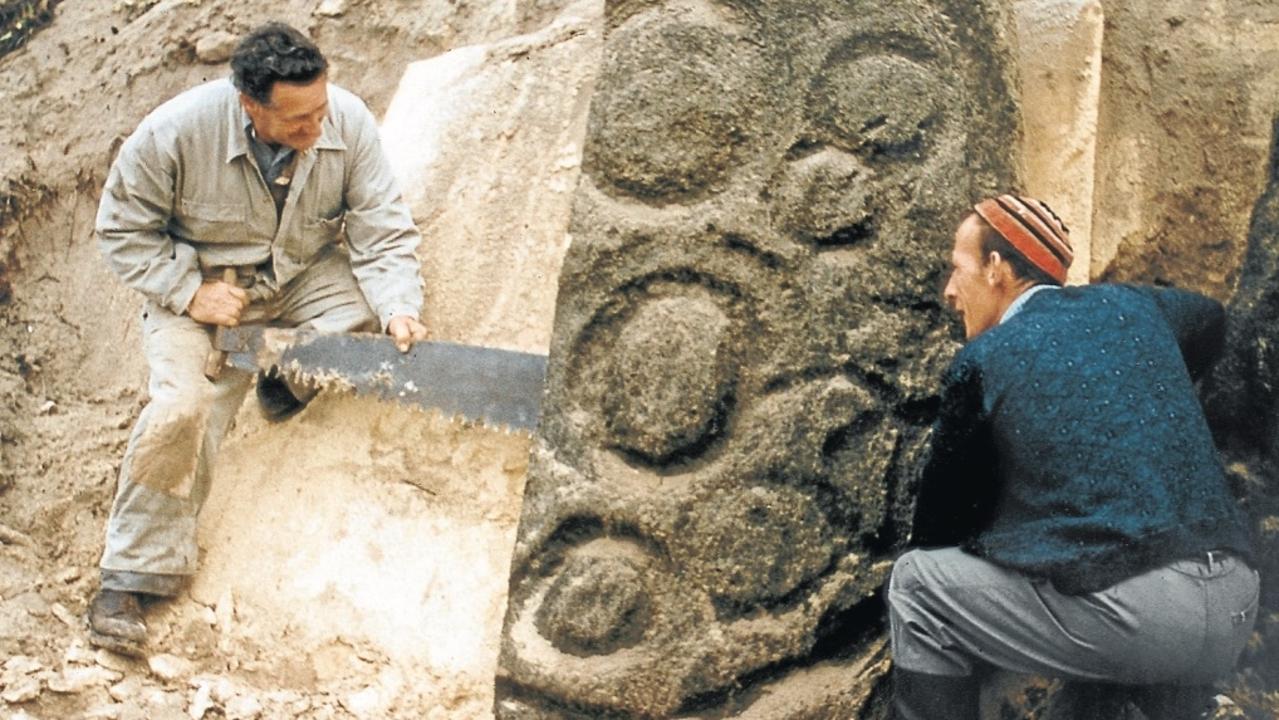Ancient Aboriginal rock carvings returning home after 60 years
Two ancient Aboriginal petroglyphs are returning to their coastal Tasmanian home after being stolen 60 years ago to become museum exhibits

READING LEVEL: GREEN
Two ancient Aboriginal rock carvings stolen 60 years ago are on their way home to far North West Tasmania.
But already there is some friction* between a local Indigenous group and the Tasmanian Aboriginal Centre which will be receiving them back to country.
Smoking ceremonies were held on November 23 as the rock carvings, or petroglyphs, were taken from the Tasmanian Museum and Art Gallery in Hobart and the Queen Victoria Museum and Art Gallery in Launceston and loaded ready for transport back to their rightful place at Preminghana, an Indigenous protected area on the west coast of Tasmania.
The petroglyphs were removed by the Tasmanian government in the early 1960s. They were cut out of rock, thrown on the back of a flatbed truck and roughly transported from Preminghana to be displayed at museums.
Pieces of the petroglyphs, which record thousands of years of Aboriginal history, broke off as the truck rumbled along.
Experts say the petroglyphs show major events such as the sighting of Halley’s comet*, the death of great Aboriginal warriors, the location of village communities and the tracks that connected these communities.

Tasmania’s Aboriginal Affairs Minister, Roger Jaensch, signed off on permits to allow the carvings to go home earlier this year in what was a historic moment for the Aboriginal community.
A ceremony will be held on site when the petroglyphs arrive at Preminghana on Saturday afternoon.
But the local Circular Head Aboriginal Corporation is planning a silent, peaceful protest at the same time.

Aboriginal Land Council Tasmania chairman Michael Mansell said the exact location where the rock carvings had been cut away had recently been identified.
The petroglyphs would be placed back and, just as in the past, would be periodically* covered and uncovered by sand driven by the wind.
While they would eventually be eroded*, this was as intended by the people who carved them, the land council said.
But the Circular Head Aboriginal Corporation is concerned about the carving’s vulnerability* to erosion* and say they have been excluded* from decision making.
On its Facebook page the corporation said locals were protesting the “burial” of the Preminghana petroglyphs.
“Culture should be shared so that future generations can learn from, be inspired by and grow from it,” the corporation said.
“They should be on display for all to see.”
GLOSSARY
- friction: conflict, disagreement
- Halley’s comet: a comet which is visible from Earth about every 75 years
- periodically: every now and then, occasionally
- eroded: gradually worn away
- vulnerability: the state of being open to harm or injury
- erosion: the process of being gradually worn away or destroyed by water or weather
- excluded: not included or involved
EXTRA READING
Indigenous treasures finally head home
Breakthrough in dating our oldest rock art
UNESCO bid for ancient art gallery
QUICK QUIZ
- When were the petroglyphs removed from their original home?
- How were they transported to the museums after their removal?
- What happened to them while they were being transported?
- What information is recorded on the petroglyphs?
- Why is the Circular Head Aboriginal Corporation planning a silent, peaceful protest?
LISTEN TO THIS STORY
CLASSROOM ACTIVITIES
1. For and against
Write reasons for and against the return of the petroglyphs.
Time: allow 15 minutes to complete this activity
Curriculum Links: English, History
2. Extension
If new petroglyphs were discovered in Preminghana, how do you think they would be treated now? Write a description using information in the story to help you.
Time: allow 25 minutes to complete this activity
Curriculum Links: English, History
VCOP ACTIVITY
My day as a petroglyph
Petroglyphs are a way of communicating a story through pictures and symbols on a rock. If you had to create a petroglyph about your day, what would it look like?
Share your petroglyph with a partner and explain what you have drawn and why.